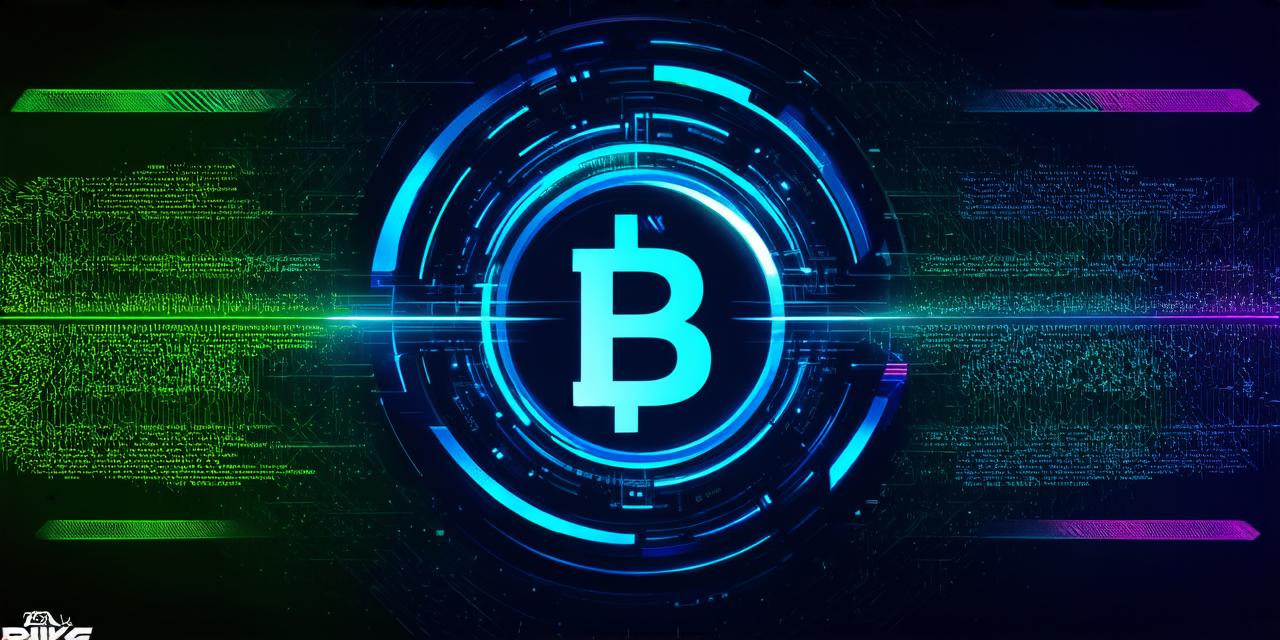Step 1: Understanding the Basics of Blockchain
Before diving into the technical aspects of building your own blockchain, it’s essential to understand the basics of the technology. The following are some key concepts you should be familiar with:
- Decentralized vs Centralized System
A decentralized system is one where there is no central authority controlling the network. Instead, the network is managed by a distributed ledger that records transactions and maintains the integrity of the data. A centralized system, on the other hand, relies on a single entity to manage and control the network. Centralized systems are more prone to failure and censorship. - Distributed Ledger Technology (DLT)
Distributed ledger technology (DLT) is a database that is managed by multiple nodes or participants in a network. DLT allows for secure and transparent recording of transactions and eliminates the need for intermediaries. DLT provides an immutable and distributed ledger that can be used to record transactions and store data securely. - Consensus Mechanism
A consensus mechanism is a protocol that enables all nodes in a network to agree on the state of the ledger. There are various consensus mechanisms, such as Proof of Work (PoW), Proof of Stake (PoS), and Delegated Proof of Stake (DPoS). Each consensus mechanism has its advantages and disadvantages, and the choice of consensus mechanism depends on the use case.
Step 2: Choosing Your Blockchain Platform
There are various blockchain platforms available for building your own blockchain, each with its unique features and capabilities. The following are some popular blockchain platforms:
- Ethereum
Ethereum is the most widely used blockchain platform for building decentralized applications (dApps). Ethereum provides a powerful smart contract language called Solidity that allows developers to create complex dApps using various programming languages such as JavaScript, Python, and Go. Ethereum also supports various consensus mechanisms, including PoW and PoS. - Hyperledger Fabric
Hyperledger Fabric is an enterprise-grade blockchain platform developed by the Linux Foundation. Hyperledger Fabric provides a modular architecture that allows for customization of the network’s features and capabilities. Hyperledger Fabric supports various consensus mechanisms, including PoW, PoS, and DPoS. - Corda
Corda is a blockchain platform developed by Ripple Labs. Corda provides a secure and scalable platform for building dApps that require interoperability between different networks. Corda supports various consensus mechanisms, including PoW, PoS, and DPoS. - EOS
EOS is a blockchain platform developed by Block.one. EOS provides a high-performance blockchain platform that supports scalable dApps using the Delegated Proof of Stake (DPoS) consensus mechanism. EOS also supports various programming languages, including C++ and Java.Step 3: Designing Your Blockchain
Designing your blockchain involves defining its features, capabilities, and architecture. The following are some key design considerations for building your own blockchain:
- Consensus Mechanism
The consensus mechanism is a critical component of the blockchain’s architecture. The choice of consensus mechanism depends on the use case and the network’s requirements. PoW and PoS are popular consensus mechanisms, but they have some limitations in terms of scalability and energy consumption. DPoS is a more scalable consensus mechanism that provides faster transaction processing times. - Smart Contract Language
The smart contract language is used to create self-executing contracts on the blockchain. Solidity is the most widely used smart contract language, but other languages such as Java and Python are also supported. The choice of smart contract language depends on the developer’s expertise and preferences. - Data Structure
The data structure defines how data is stored and accessed on the blockchain. The most common data structures used in blockchain technology include Hash Tables, Merkle Trees, and Directed Acyclic Graphs (DAGs). The choice of data structure depends on the use case and the network’s requirements.Step 4: Building Your Blockchain
Building your own blockchain involves implementing the design and architecture on a blockchain platform. The following are some key steps for building your blockchain:
- Setting up the Environment
The first step in building your blockchain is to set up the environment. This involves installing the required software, tools, and libraries on your development machine. The choice of environment depends on the blockchain platform you choose and the programming language used. - Implementing the Smart Contracts
Smart contracts are self-executing contracts that automatically enforce the terms of an agreement between two parties. Smart contracts can be written in various programming languages such as Solidity, Java, and Python. The smart contract code should be tested thoroughly to ensure it functions correctly and securely. - Implementing the Consensus Mechanism
The consensus mechanism is a protocol that enables all nodes in a network to agree on the state of the ledger. The consensus mechanism can be implemented using various programming languages such as C++, Go, and Solidity. The implementation should be tested thoroughly to ensure it functions correctly and securely. - Building the User Interface
The user interface is the front-end component that allows users to interact with the blockchain. The user interface can be built using various web development technologies such as HTML, CSS, and JavaScript. The user interface should be designed to be user-friendly and intuitive.Step 5: Testing and Deployment
Testing and deployment are critical steps in building your own blockchain. The following are some key steps for testing and deploying your blockchain:
- Testing
The blockchain should be thoroughly tested to ensure it functions correctly and securely. The testing can be performed using various techniques such as unit testing, integration testing, and system testing. The blockchain should also be tested for its scalability and performance under different loads. - Deployment
Deploying the blockchain involves deploying the smart contracts, consensus mechanism, and user interface on a public network. The deployment can be performed using various techniques such as cloud-based deployment or on-premise deployment. The blockchain should also be secured by implementing appropriate security measures such as access control and data encryption.
